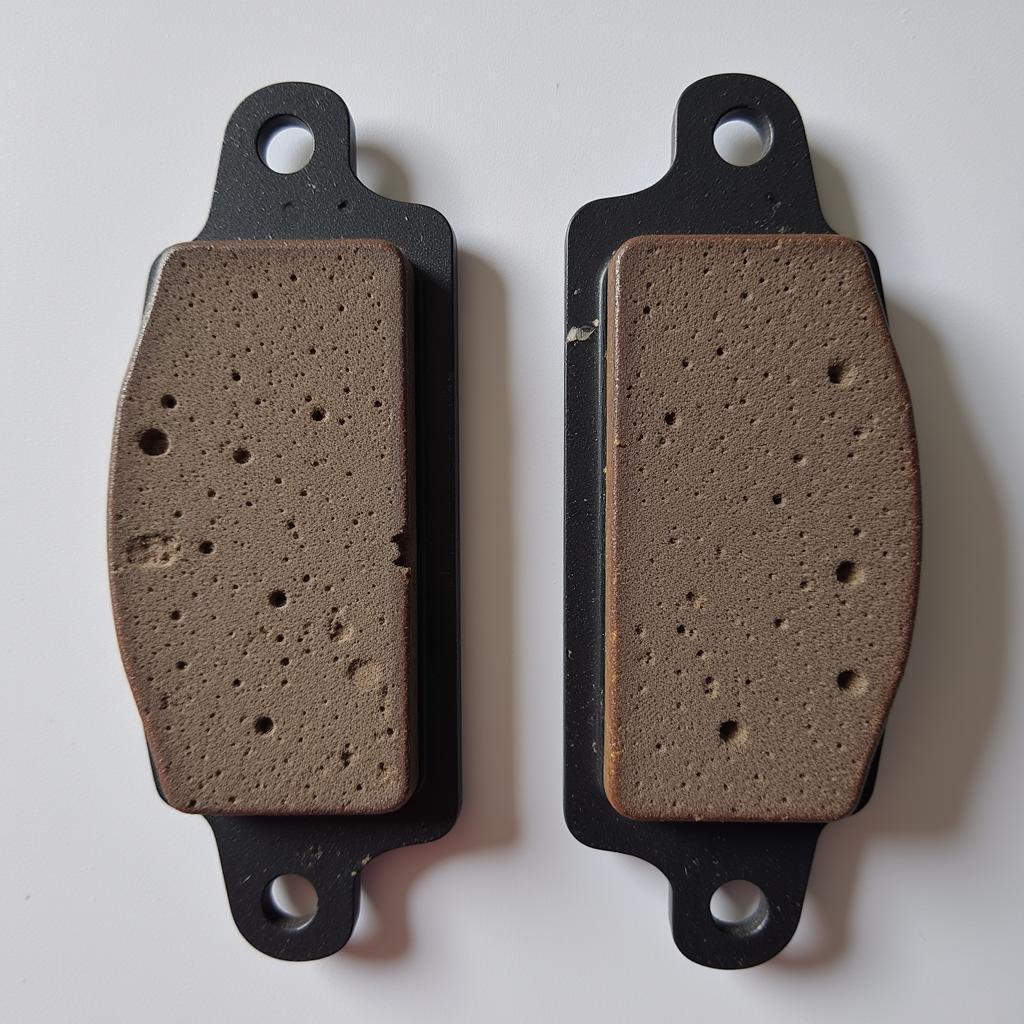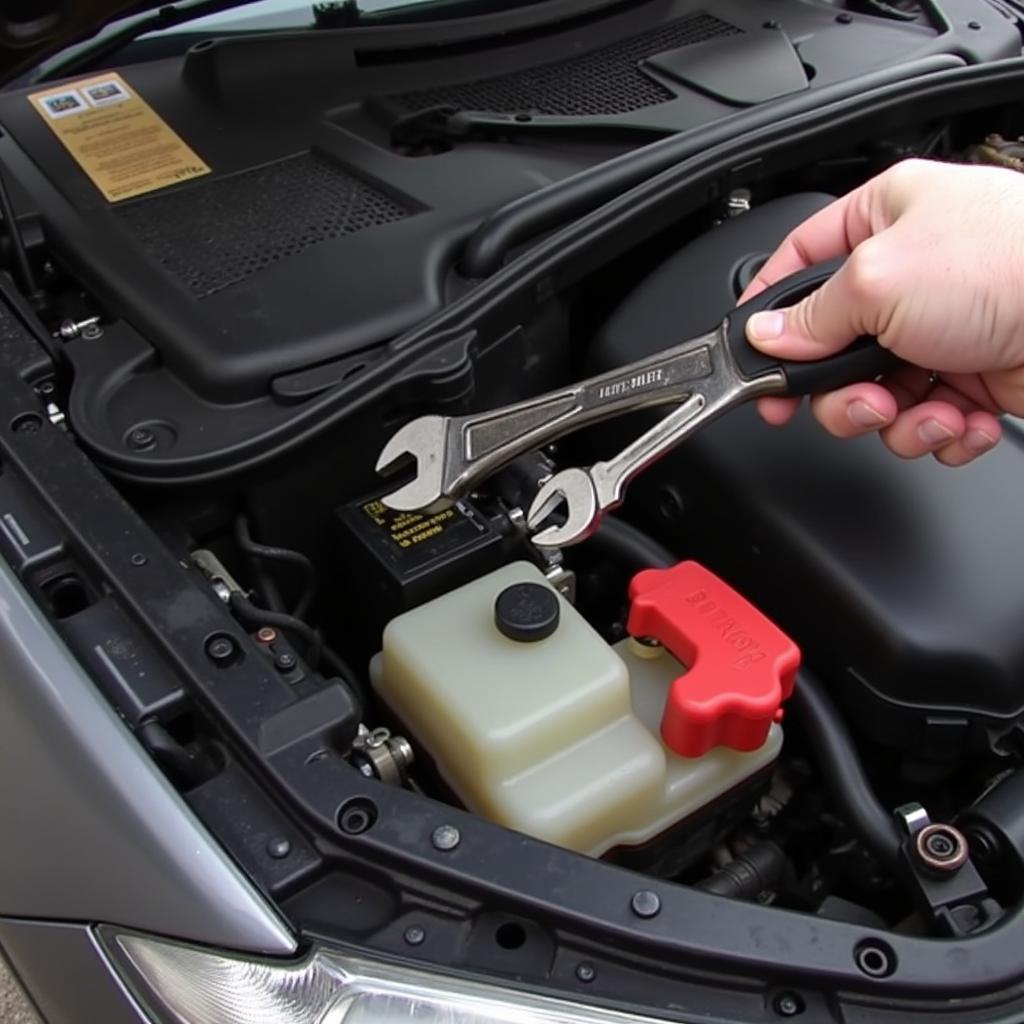If your 2015 Subaru Forester has a dash light warning about brakes, it’s crucial to address the issue promptly. This warning light can indicate various problems, from minor issues like low brake fluid to more serious concerns like worn brake pads or a malfunctioning ABS system. This comprehensive guide will walk you through diagnosing the problem and provide potential solutions, empowering you to take the necessary steps to ensure your safety and the proper functioning of your vehicle.
Understanding Your Subaru Forester’s Brake Warning Light
The brake warning light in your 2015 Subaru Forester is designed to alert you to potential issues within the braking system. It’s essential to understand that this light can be triggered by several factors, and simply topping off the brake fluid may not always resolve the underlying problem. Ignoring the warning light can lead to more serious and costly repairs down the road, potentially compromising your safety.
Common Causes of the Brake Warning Light
The brake warning light can illuminate for several reasons, including:
- Low Brake Fluid: This is the most common cause. Brake fluid levels decrease naturally as brake pads wear.
- Worn Brake Pads: As your brake pads wear down, the brake calipers need to extend further to engage the rotors, leading to lower brake fluid levels.
- Brake Fluid Leak: A leak in the brake lines can cause a rapid drop in brake fluid and significantly reduce braking performance.
- Faulty ABS System: Issues with the Anti-lock Braking System (ABS) can also trigger the warning light. This could be due to a malfunctioning sensor or another component within the ABS system.
- Parking Brake Engaged: While seemingly obvious, sometimes the parking brake can be partially engaged, triggering the light.
Diagnosing the Problem
Before rushing to a mechanic, you can perform some basic checks:
- Check the Parking Brake: Ensure the parking brake is fully disengaged.
- Inspect Brake Fluid Level: Open the hood and locate the brake fluid reservoir. Check the fluid level against the minimum and maximum markings.
- Visually Inspect Brake Pads: If possible, look through the wheel spokes to assess the thickness of the brake pads. Thin brake pads often indicate the need for replacement.
“Regularly checking your brake fluid and visually inspecting your brake pads can prevent many brake-related issues,” advises John Smith, ASE Certified Master Technician.
Troubleshooting and Solutions
Depending on the diagnosis, here are some potential solutions:
- Low Brake Fluid: Add the correct type of brake fluid to the reservoir, ensuring not to overfill. If the fluid level drops quickly again, suspect a leak.
- Worn Brake Pads: Replace the brake pads as soon as possible. Driving with worn brake pads can damage the rotors and compromise braking performance.
- Brake Fluid Leak: Immediately take your vehicle to a qualified mechanic to identify and repair the leak. This is a serious safety concern.
- Faulty ABS System: If you suspect an issue with the ABS system, a professional diagnosis using a diagnostic scanner is recommended.
- Parking Brake Issue: If the parking brake is the cause, ensure it is fully released. If the light persists, there may be a problem with the parking brake mechanism itself.
When to Seek Professional Help
While some issues, like low brake fluid, can be easily addressed, others require professional expertise. If you’re unsure about the cause of the warning light, or if the problem persists after attempting basic troubleshooting, consult a qualified mechanic.
“Don’t underestimate the importance of a properly functioning braking system. If you’re experiencing any issues, it’s always best to seek professional advice,” says Sarah Jones, Automotive Engineer specializing in brake systems.
Preventing Future Brake Problems
Regular maintenance is key to preventing brake issues. This includes:
- Regular Brake Inspections: Have your brakes inspected by a professional at least once a year.
- Brake Fluid Flushes: Brake fluid should be flushed and replaced according to your Subaru’s maintenance schedule.
- Avoid Riding the Brakes: Excessive braking can wear down brake pads prematurely.
 Worn Brake Pads on a 2015 Subaru Forester
Worn Brake Pads on a 2015 Subaru Forester
Conclusion
Addressing a brake warning light in your 2015 Subaru Forester is crucial for your safety. By understanding the potential causes and following the troubleshooting steps outlined in this guide, you can take the necessary action to ensure your vehicle’s braking system is functioning correctly. Remember, if you’re ever in doubt, consulting a qualified mechanic is always the best course of action.
FAQ
- What does the brake warning light mean? The brake warning light typically indicates low brake fluid, worn brake pads, a brake fluid leak, or a problem with the ABS system.
- Can I drive with the brake warning light on? While you might be able to drive a short distance, it’s highly recommended to address the issue immediately as it can significantly compromise braking performance.
- How often should I check my brake fluid? It’s a good practice to check your brake fluid level at least once a month.
- How often should I replace my brake pads? Brake pad lifespan varies depending on driving habits and conditions. Consult your Subaru’s maintenance schedule for recommended replacement intervals.
- How much does it cost to replace brake pads? The cost varies depending on the type of brake pads and labor rates.
- How can I tell if my brake fluid is leaking? Look for signs of fluid leaks around the brake lines, calipers, and master cylinder.
- What is the ABS system, and why is it important? The Anti-lock Braking System (ABS) prevents wheel lockup during hard braking, allowing you to maintain steering control.

